. Knitting Needles:
Materials:
Needles came in metal, plastic, wood and bamboo. Each has its own characteristics. Metal can be cold and inflexible to work with, but it is more slippery than other materials and can help you knit faster. Wood, bamboo or plastic on the other hand are warmer and more flexible, and are smooth rather than slippery. Try different materials and find which type is best for you.
Tips:
The tip of the needle is also something to consider. Some needles have a blunt tip and some have a sharp tip. A blunt tip is harder to insert into stitches but is better to use with a loosely spun or thick yarn. A sharp tip can split the stitches but is useful when working pattern stitches or knitting with a tight gauge (tension).
Sizes:
The size of a needle is determined by its diameter and there are three sizing systems. In the US, needles have the American size and metric equivalent. In Britain, they have the metric size with the old UK size. The UK/Canadian numbering system differs from the US system, so it's better to by needles based on diameter than on numbering system. The table shows needle size in metric as well as both US and UK numbering.
Lengths:
Three standard lengths are available. 10 in (25 cm), 12 in (30 cm) and 14 in (35 cm). Use longer needles for projects with a large number of stitches and shorter needles for fewer stitches. Many knitters find it easier to use a circular needle instead, working as for flat knitting, and turning the work at the end of every row.
Styles:
Knitting needles come in three main varieties: straight needles (come in various lengths and have a point on one end and a knob on the other), circular needles (which have two points connected by a nylon cord, come in a variety of lengths and materials) and double pointed needles (pointed on both ends, are sold in sets of four or five).
. Straight Needles:
Most knitters start off using straight needles. Small beginning projects such as scarves are best complement on these needles. Straight needles are used in pairs and have a point at one end with a fixed knob at the other. They are used for flat knitting, working across a row of stitches moving them from one needle to the other, turning the work and working back again, and continuing back and forth.
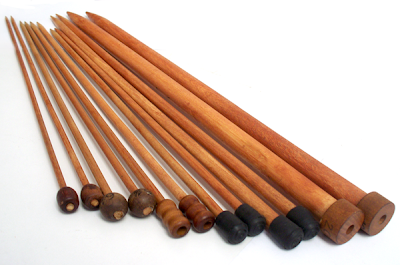
. Circular Needles:
Circular needles consist of a pair of single-pointed needles joined by a flexible nylon wire. Knitting on circular needles produces s seamless, tubular piece of knitting, perfect when creating a hat or the body of a sweater. They come in several different sizes: 12, 16, 20, 24, 32 and 40 inch lengths are available They can be used for knitting flat pieces by knitting back and forth, as with straight needles. How to knit on circular needle.
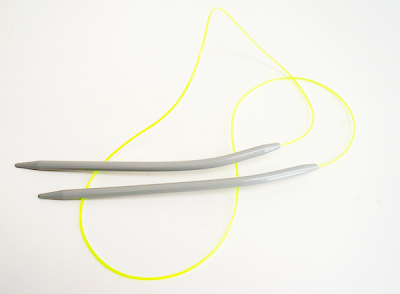
.Double-Pointed Needles :
Double Pointed Needles are used in sets of four or five and have a point at each end.
They are used to work in the round, as with circular needles, but with these you can knit from both ends. When using double pointed needles, the stitches are divided evenly over three, or sometimes four, needles and the remaining needle is used to work the stitches.
They are generally used when working small projects in the round, such as socks, mittens, or gloves.
Double pointed-needles usually come in sets of 4 or 5 needles and in lengths of 5 to 10 inches.
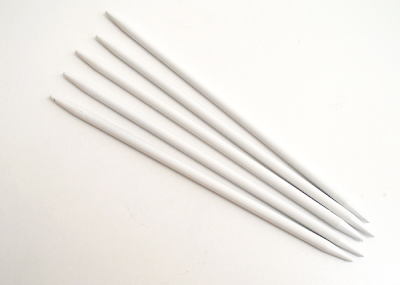
A small needle with points at both ends that is usually about 4'' long and some have a kink or crank in the middles to help keep the stitches. They are used to temporarily hold any stitches that you've taken off your working needle that will be worked later. Stitches on the cable needle are held either in the front or in the back of your work (the pattern will direct you where to hold them). (i.e)

. Stitch Holder:
Stitch holders: to hold numerous stitches not being worked (i.e. a vest), usually look like big safety pins with blunt end. You can use a safety pin for a small number of stitches..

. Tapestry Needle:
A tapestry needle with a large eye and blunt end for sewing pieces together and sewing in ends.
. Crochet Hooks:
Crochet hooks are generally 5 to 7 inches in length. There is a hook at one end, which you use to grab yarn or thread and pull it through the stitches of your work. You hold the hook along its shaft, and there may be a flat section of the shaft to serve as a grip. Some hooks feature designs or embellishments at the end opposite the hook, but these are decorative and don't serve a function.
In knitting, a crochet hook rescues dropped stitches and can be used to cast off.

. Accessories:
Stitch Markers to mark a point in knitting where an increase, a decrease, or a pattern change occurs.
Row counters to keep track of your rows in knitting.
Point protectors prevent work from slipping off the needles.
Bobbins can keep yarns from tangling when working intarsia designs or another color knitting.
Scissors to cut the yarn, never be tempted to break the yarn, you will stretch the fibbers.
Notepad and pen to write lot of information to remember.
A needle gauge to check the size of needle; circular needles and double-pointed needles tend not to be marked.
Stitch Gauge Like a small ruler, but a stitch gauge usually has a little box cut out, and stitches are counted inside it.
Tape Measure Handy to have for measuring garment length and checking your gauge. The most useful tape measures have both inches and centimeters on the same side, so that you can compare measurements.
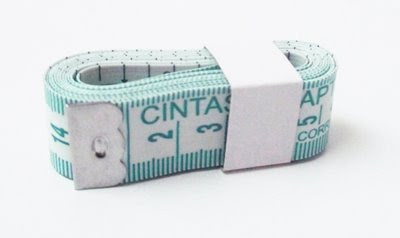
.Yarns :
Yarns come in so many fibers, weights, and textures that you may be overwhelmed when you first walk into a yarn shop. You can choose natural fibers, synthetic fibers and blends.


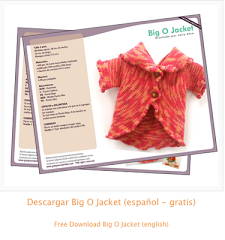
0 comentarios:
Publicar un comentario en la entrada